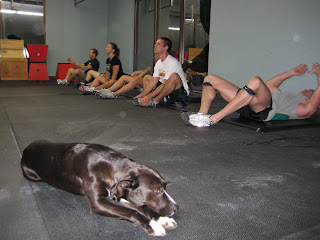
2 minutes Sit-ups
90 seconds Double Unders
90 seconds Sit-ups
1 minutes Double Unders
1 minutes Sit-ups
1 minutes Sit-ups
30 seconds Double Unders
30 seconds Sit-ups
Record Total Number of Double Unders and Sit-ups
Area under the curve:
Crossfit bases any improvements in fitness solely in the terms of increased work capacity. I'm an english major, not a math wunderkind but I'll try my best to explain a few of the minutiae of programming:
Power/Time=Work Capacity
Work in this case refers to any amount of Meter/Kilos/ Seconds a measurable discernible solid quantity. The reason why we don't use the scale as a arbiter of success is that it is not also correct. My weight can fluctuate day to day, were as 200 kilos on the barbell is always 200 kilos.
If you were to graph this equation, you get a curve. The shorter the time competent the more power I can produced, The longer the time competent the less power I can produce. The area under this curve is what crossfit defines as your work capacity. When you increase you Meter/Kilos/Seconds you have increased your area under the curve and are those more fit.
In reality I have found it nearly impossible to combine all the pursuit and measures of crossfit into one graph. The testing for one pursuit, such as rowing or weightlifting, would take months. So this work capacity graphs is really a way of imagining what we call fitness is.
There's a third axis that crossfit has recently added that involves extending this work capacity graph over time and correlating that with health. We'll cover this in a later post.
Another implication of this sort of thing is reflected in programming. There are primarily only 2 types of crossfit workouts. Task-Completion and Time-completion: task completion are where there are a given set of reps to do and an unlimited amount of time to do them in. Time completion is where there is a limited amount of time and an unlimited amount work to do. How quickly you can do the task and how much of the task you can do in a given time is how fit you are.





No comments:
Post a Comment